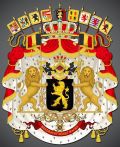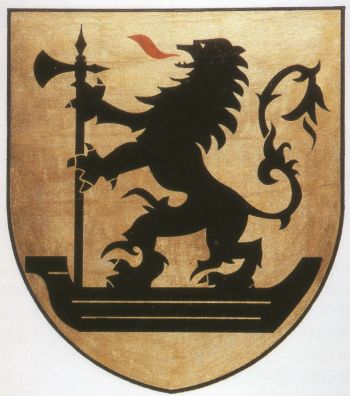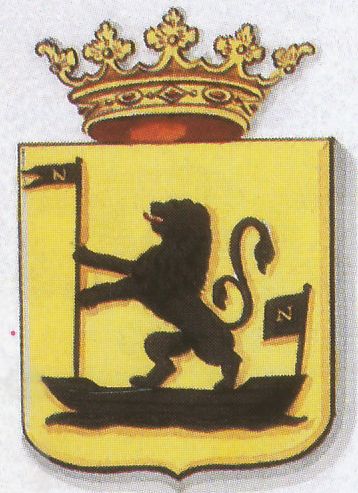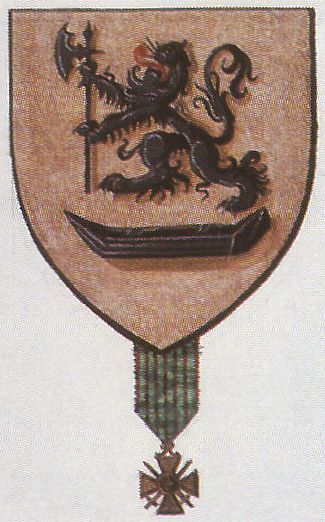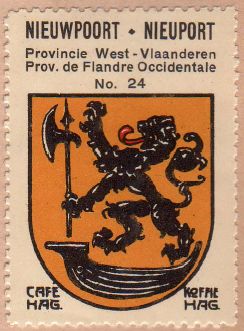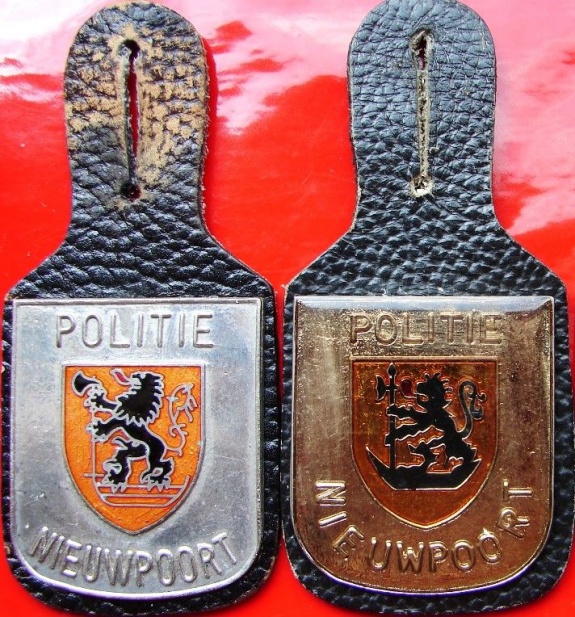Nieuwpoort (West-Vlaanderen): Difference between revisions
Knorrepoes (talk | contribs) No edit summary |
Knorrepoes (talk | contribs) m (Text replacement - ".jpg|center]] ====Official blazon====" to ".jpg|center|Wapen van {{PAGENAME}}]] ====Official blazon====") |
||
| Line 5: | Line 5: | ||
Additions : 1970 Ramskapelle, Sint Joris | Additions : 1970 Ramskapelle, Sint Joris | ||
[[File:nieuwpoo.jpg|center]] | [[File:nieuwpoo.jpg|center|Wapen van {{PAGENAME}}]] | ||
====Official blazon==== | ====Official blazon==== | ||
Revision as of 17:19, 21 January 2016
Belgium heraldry portal
This page is part of the Belgium heraldry portal |
Heraldry of the World |
|
Civic heraldry:
|
Other heraldry: |
NIEUWPOORT
Province : West-Vlaanderen
Additions : 1970 Ramskapelle, Sint Joris
Official blazon
- (1819) Een schild van goud beladen met een opene boot waarin is staande een leeuw houdende in deselfs voorste pooten een vlag waarin is geplaatst de letter N en op de boot van achteren een vlag, waarin mede de letter N alles van goud. Het schild gedekt met een kroon van goud.
- (1843) Eenen gulden schild met een zwart schuytje, gedekt met eenen leeuw ook van goud met eene roode tong, houdende eene zwarte hellebaerd lynregt geplaatst.
- (1926) In goud een bootje van sabel, overtopt met eenen leeuw van hetzelfde, getongd van keel houdende eene hallebaard van sabel, paalsgewijs geplaatst. Het schild uiterlijk versierd met het juweel van het Fransch oorlogskruis vergezeld van zijn lint en van den schildvoet uitgaande.
- (1984) In goud een bootje van sabel, waarin een leeuw van hetzelfde, getongd van keel en houdende een hellebaard van sabel, paalsgewijze geplaatst.
Origin/meaning
The arms were granted on July 28, 1819, confirmed and improved on July 21, 1843, augmented on July 26, 1926 and finally again granted on November 5, 1984.
Nieuwpoort was founded in 1163 by Pilip of the Alsace, Count of Flanders and became a city in the early 13th century. The oldest seal dates from 1237 and shows a ship with a man on the rudder. The contra seal shows only a fish. Until 1472 all seals show similar compositions, either a boat with one or two people, and one or more fish. These seals indicate the importance of fishing for the city.
The seal from 1472 shows a shield with a lion and an angel as supporter. The lion is the Flemish lion and indicates the importance of being a Flemish city.
In 1514 a new seal appears, showing a lion on a boat, with a soldier behind the shield and two lions as supporters. The contra-seal shows only a ship. During the early 16th century more images of the arms appear, all showing a black lion in a ship. On images from 1562 onwards the lion hold a halberd. The whole composition appears on the seals of the city by the end of the 17th century.
In 1819 the Dutch government based the arms on the old seal, but replaced the halbard by a flag with the town's initial. Also an extra flag was added on the back of the boat. Finally, a crown was added, common for cities which were represented in the provincial parliament. After the Belgian independence the historical arms were granted and the crown was omitted.
Interestingly, in the 1819 blazon the colour of the boat and the lion is not described (black, red tongue), and in the 1843 blazon shows the lion of gold instead of black. In both cases the drawing thus is historically correct, but the blazon is wrong.
In 1926 the arms were properly blazoned and the arms were augmented by the French War Cross 1914-1918, but in 1984 the municipality removed this again.
| The arms from 1819 |
The arms from 1843 |
| The arms from 1926 |
The arms in the Koffie Hag/Café Hag albums +/- 1930 |
| The arms on a police badge (source) |
Contact and Support
Partners:
Your logo here ?
Contact us
© since 1995, Heraldry of the World, Ralf Hartemink 
Index of the site
Literature : Servais, 1955
